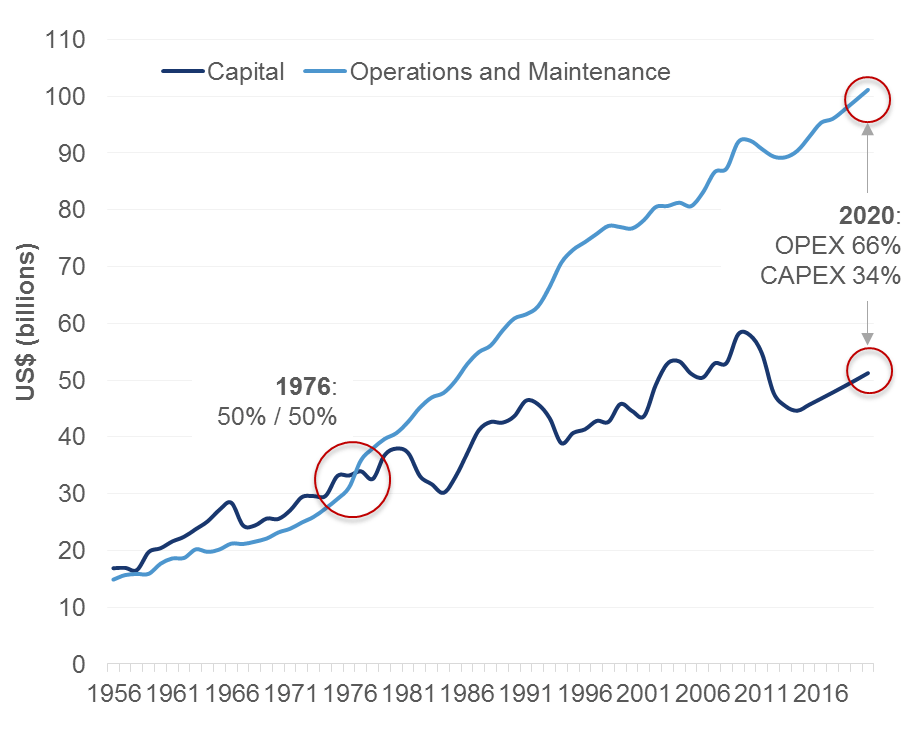Boston, Massachusetts: The day-to-day cost of operating and maintaining U.S. municipal water and wastewater infrastructure is taking on an oversized share of utilities’ total expenditures (TOTEX). Over the last fifty years, spending on operations has escalated from a 50% to a 66% share of total utility expenditures with few signals of slowing, according to a new report from Bluefield Research.
“By deferring capital projects to rehabilitate and replace an aging network of pipes and treatment facilities, we are just kicking the can down the road,” says Mariel Marchand, Senior Analyst for Bluefield. “The unintended consequence is that utilities are increasingly forced to draw from operating budgets to tackle emergency repairs and events.”
According to Bluefield’s report, Forecasting Municipal Operating Expenditures in a Post-COVID World, 2021-2030, OPEX for water utilities are projected to steadily climb from $99.6 billion in 2021 to $116.4 by 2030. These day-to-day expenditures are focused on ongoing utility operations, driven by changing inputs such as labor, chemicals, and power for water treatment.
Exhibit: U.S. Municipal CAPEX and OPEX (1956-2020)

Bluefield’s forecast addresses 12 key budget categories for water & wastewater systems that are influenced by critical inputs such as utility size, source of water supplies, and geography. At the forefront of utility operating expenditures is labor, which makes up $427.2 billion, or 40%, of the ten-year forecast total. The remaining 60% is more fragmented by ongoing services (e.g., energy, sludge disposal) and supplies (e.g., chemicals).
While the water sector’s labor market has long been in transition—increasingly shaped by employee retirements and concerns of an industry-wide “brain drain”—the current pandemic has placed additional stress on disrupted utility workforces. The result has been a dramatic shift towards remote work environments that will further accelerate investment in digital technologies, including those for workforce management. Looking forward, software & digital technology, though still only accounting for 2.1% of total OPEX, is forecasted to be the fastest growing budget category between 2021 and 2030.
“Unforeseen events, such as COVID-19 and climate-related issues (e.g., drought, floods, and fires) are forcing utility planners into more reactive stances,” says Marchand. “The result is that city planners and utility operators are increasingly distracted from much needed long-term strategic planning efforts.”
About Bluefield Research
Bluefield Research provides data, analysis, and insights on global water markets. Executives rely on our water experts to validate their assumptions, address critical questions, and strengthen strategic planning processes. Bluefield works with key decision makers at municipal utilities, engineering, procurement and construction firms, technology and equipment suppliers, and investment firms.

